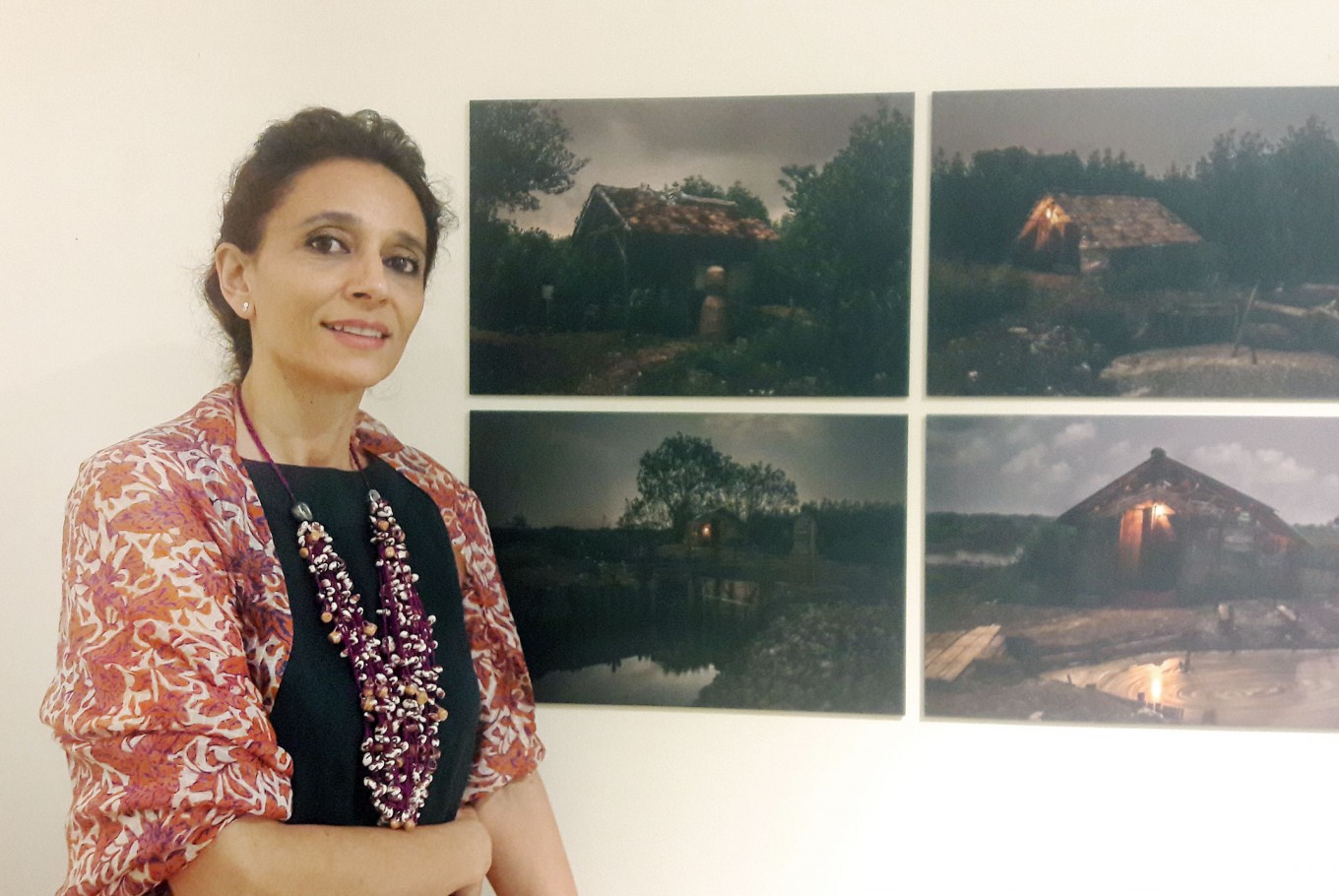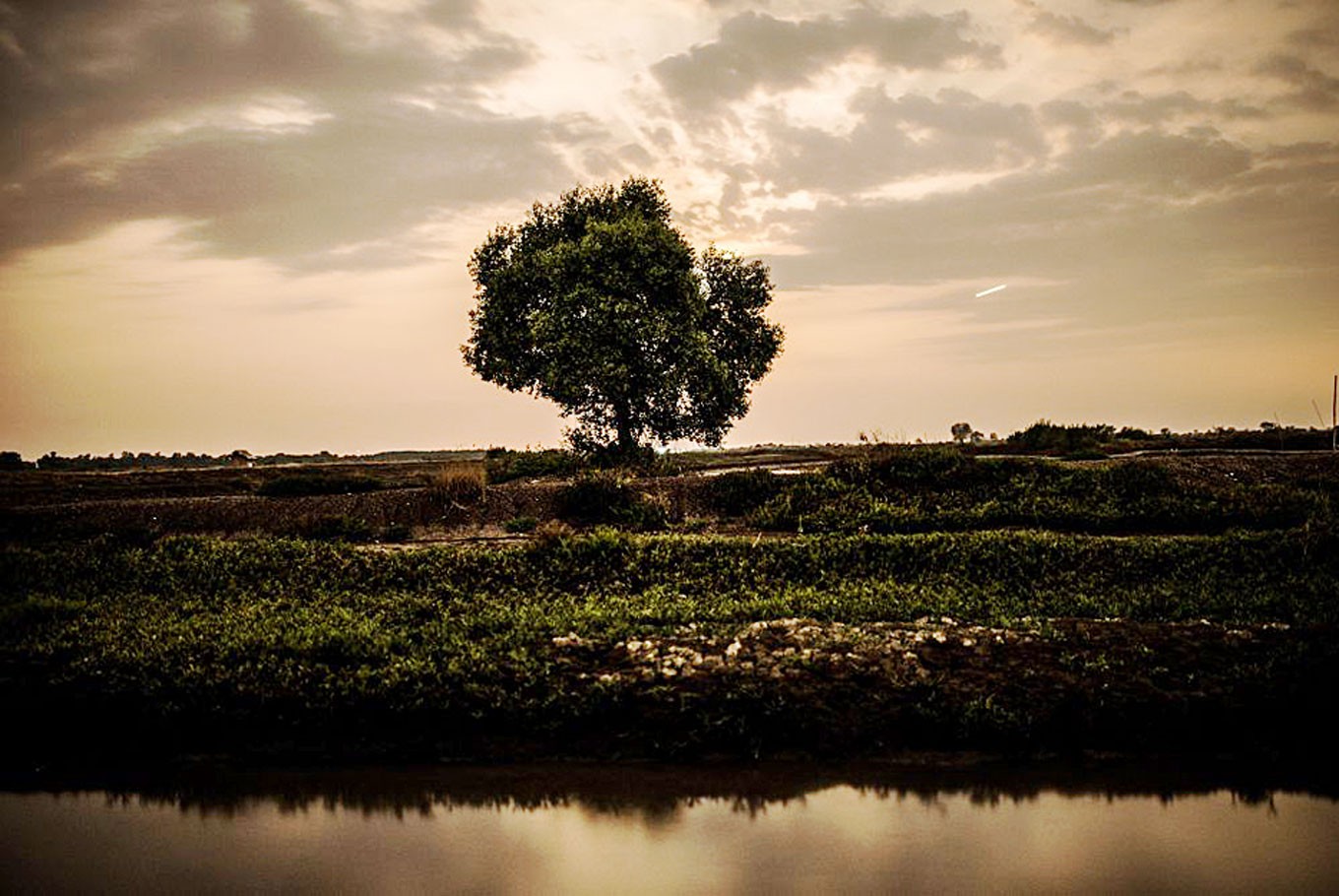Popular Reads
Top Results
Can't find what you're looking for?
View all search resultsPopular Reads
Top Results
Can't find what you're looking for?
View all search resultsMangrove preservation in images
Italian environmental scientist and photographer Elisabetta Zavoli chronicles her four-year journey in recording the lives of Javanese fishing communities and their efforts to restore mangroves in a photo exhibition called The Tree Of Life.
Change text size
Gift Premium Articles
to Anyone
A
n exhibition at the Istituto Italiano di Cultura in Jakarta from December last year to April 10, shows how the preservation of mangrove trees has become the center of the livelihood of coastal dwellers across Java’s coastline.
Zavoli, who was born in 1976 in Rimini, Italy, said during the exhibition that the project began with her curiosity as a scientist regarding the blue carbon ecosystem, in which mangroves play a major part.
“I didn’t know what the blue carbon ecosystem was. I had always heard about carbon in a bad way,” Zavoli told The Jakarta Post in an interview.
“I want to know what the blue carbon ecosystem is. I learned that they are very unique like mangroves and they are really useful in stocking carbon extraction and also they support a huge variety of species that live in the sea,” she said.
After learning about the importance of mangroves in the blue carbon ecosystem, Zavoli, a chemist who graduated in environmental sciences at University of Bologna in 2001, began to conduct research on the internet to find out more about her new subject of interests and she found out about a wetland program that aimed to preserve mangroves in Indonesia.
Read also: Mangrove tourism abundant in Semarang
“I went to visit the site in Sawah Luhur [in Banten] and asked if I could follow their restoration project along the years,” Zavoli said.
Zavoli visited Indonesia in 2012 and decided to utilize her skills in photography to record the preservation of mangroves and, at the same time, to tell a story about how local fisherman did their best to develop and sustain mangrove trees both for the environment and their economic lives.
Zavoli has been developing her photography skills since 2005 due to the influence of Italian photographer Lidia Bagnara,
The process of recording mangrove preservation on the coastal lines of Java lasted from 2012 to 2016. During that period, Zavoli regularly made time to live with the fishermen families, moving from one house to another every three or four months.
“I followed the activities of fish farmers. I learned all the activities of the fishermen from fishing, shrimp collecting and so on,” she said.
Throughout the four years, Zavoli took thousands of photographs, which she at first considered to be a huge challenge, but when she finally decided to hold a photo exhibition, she knew that her huge collection would be useful.
 Still hope: Supiro, 32, plants young mangroves in his pond.(Elisabetta Zavoli /File)
Still hope: Supiro, 32, plants young mangroves in his pond.(Elisabetta Zavoli /File)
“Shooting pictures over four years means a lot of pictures. But it also means you have a lot of access to different moments of the year. It gave me access to particular situations and I think the good part is to find the beauty in this landscape,” she said.
“It [selecting which photographs to be exhibited] was a continuous process. First, I took some pictures, then along the years I took better ones so I put some of the previous ones aside and replaced them with the new ones,” she added.
Under her selection method, Zavoli also ensured the exhibition would include all photos from the beginning in 2012, knowing the importance of the audience to see how hard it was for the fishermen to preserve and utilize the mangroves in a sustainable way.
“At the beginning it was hard, because when mangroves are small, they can’t support an ecosystem. So, I needed to wait and took photographs for a few years until they grew, so they could nurse little shrimp and fish,” Zavoli said, adding that during the documentation, she had witnessed how the locals became more aware about the importance of this project as it also concerned with their livelihoods.
Read also: Fate of mangroves lies in shrimp aquaculture
The photographs displayed in the exhibition represent Zavoli’s fondness of playing with colors and natural lighting.
A large number of her works are dramatic and display colorful images. One of them shows a lonely mangrove tree standing on a barren coastal valley during a night of the Blood Moon. This photograph, also titled The Tree of Life, was taken spontaneously after Zavoli saw how the red moon produced a dramatic backdrop for the main object of the photo.
In another photo called Blood Stained, Zavoli utilizes the reddish rays of sunset to depict an analogy of the environmental damage to mangroves caused by massive land reclamation projects in Java for the last 25 years. In this photo, the rays show a bloodstained color on the coastline.
“If mangrove trees had blood, the 54,000 kilometers of Indonesian coastline would be indelible stained with red as a result of the massive land reclamation project in the last 25 years,” Elisabetta commented on the photo.
 Elisabetta Zavoli(Elisabetta Zavoli /File)
Elisabetta Zavoli(Elisabetta Zavoli /File)
Mangroves are considered one of the most threatened ecosystems on the planet despite their ability to protect the world’s coastlines from storm surges, sea-level rise and even tsunamis.
According to a report released in 2014 by the United Nations Environment Program (UNEP), mangroves are being destroyed at a rate that is between three and five times greater than the average rates of forest loss.
Titled The Importance of Mangroves: A Call to Action, the report says the continuous destruction of mangroves has cost billions in economic damage and has denied millions of people the ecosystem services they need to survive.
The report also describes how emissions resulting from mangrove losses make up nearly one-fifth of global emissions from deforestation, resulting in economic damages of between US$6 billion and $42 billion annually.
In addition, mangroves are also threatened by climate change, which can result in the loss of a further 10 to 15 percent of mangroves by 2100. For Southeast Asia, the report predicts that by 2050, countries in this region will potentially have lost 35 percent of the mangrove cover they had in 2000.
Southeast Asia is expected to suffer more than $2 billion annually from the destruction of mangroves over the period between 2000 and 2050, with Indonesia predicted to suffer the highest losses at $1.7 billion per year.
Zavoli said she planned to bring The Tree of Life photo exhibition to Europe so that more people in privileged countries become aware of the importance of the plantations in the blue carbon ecosystem.
“I would like to really shed light on my fellow citizens about the story of these brave fishermen fighting for their future and trying to live in a sustainable way,” she said.











